
STRATEGIC PLAN 2023-2028
LETTER FROM THE DIRECTORS
From its inception in 1987, the Ojai Valley Land Conservancy has developed similarly to many other land trusts, and mirrors the development of the land trust movement in the United States. As Ojai’s environmental activists worked to stop poorly conceived development proposals, OVLC’s founders realized the valley also needed a pathway to conserve its land. While it took over ten years for OVLC to acquire its first tract of land, the organization now protects over 2,400 acres and has grown into one of the Ojai Valley’s most respected nonprofits.
Over the years, OVLC has shifted its focus to place more emphasis on preservation of important natural assets (such as riparian habitats) as opposed to using acquisition of land as a tactic to avoid unwelcome development. That said, two of OVLC’s most cherished preserves—Ventura River and the Ojai Meadows—grew out of efforts to halt harmful development. Many land trusts across the nation have experienced a similar evolution of purpose and strategic focus.
OVLC’s conservation mission continues to evolve. Climate change is fueling landscape-scale shifts in our wildlands. The breadth and scale of human impacts across the globe have fundamentally altered natural communities, damaged ecosystems, and fragmented habitats. Reversing these trends requires proactive work at all scales. While climate change is global, climate resilience requires a local strategy. Restoring native ecosystems enhances nature’s ability to rebound from extreme climate events (heat, fire, drought, flood).
OVLC recognizes the importance of restoration in today’s changing climate and that is why we have added “restore” to our mission. While OVLC has done extensive work restoring native oak woodland and riparian habitats, we realize that these efforts need to expand to enhance habitat and build connectivity between protected lands. It is this understanding that has led OVLC to pursue our recent initiative to Rewild Ojai. Our goal is to empower landowners across a mosaic of land-use types to restore their land for climate resilience. Restoring ecosystem functions of native habitats provides a host of benefits.
This plan will guide OVLC as we work to lead the Ojai Valley in strategies to secure a more resilient future. Ventura County is the fastest warming county in the nation, and this is likely to have profound effects on the ecology and livability of the Ojai Valley for humans and wildlife alike. By taking strategic steps today, OVLC can benefit the ecology of the valley forever. Investments in our natural capital are no-regrets actions that protect the attributes that make the Ojai Valley such a special place.
If we get it right and fulfill the promise of this plan, there is hope that we’ll achieve our vision of a vibrant and resilient valley with its full complement of native species, tremendous views, and abundant recreational opportunities. We invite you to join in this effort.
As a land trust, we look at natural capital to help us determine the value of land. We define natural capital as the sum of the natural assets on the land. This consists of the value of the plants, water, soil, animals, and other natural resources on the land and the ecosystem services they provide.
 Tom Maloney Executive Director
Tania Parker Deputy Director
Tom Maloney Executive Director
Tania Parker Deputy Director
Ecosystem services are the many varied direct and indirect benefits to human well-being gained from the natural capital. For example, a restored landscape slows, spreads, and sinks precipitation, thereby minimizing flood and recharging our groundwater. Natural resource managers are realizing that ecosystem services like these provide strong economic rationale for conservation
of
open spaces.

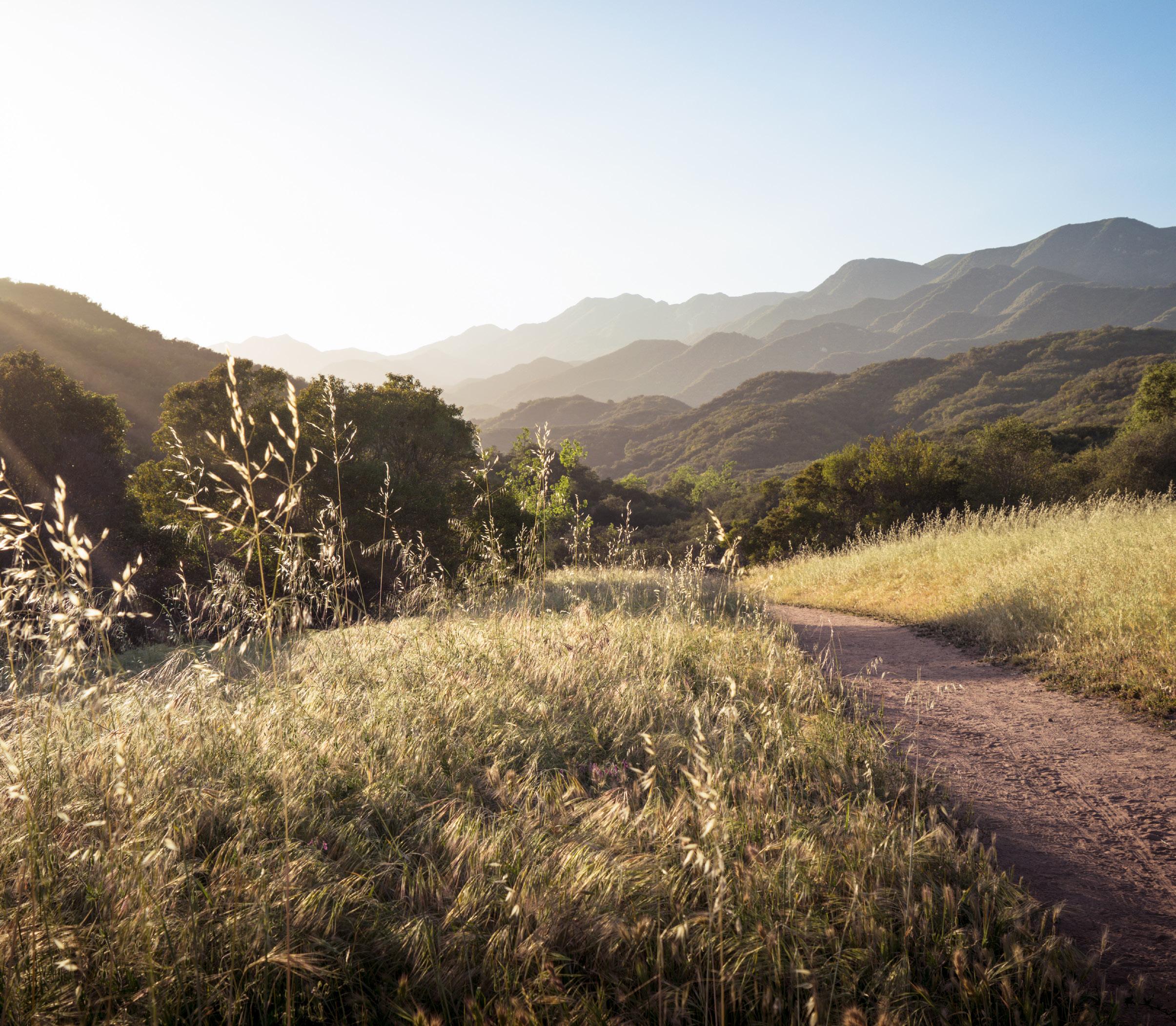
ACKNOWLEDGMENT OF LAND
As stewards of the land and water in the Ojai Valley, we recognize the Chumash people as original stewards of this land and hope to honor the values that enable them to coexist harmoniously with the natural ecosystem.

MISSION
To protect and restore the natural landscapes of the Ojai Valley forever
VISION
To lead Ojai Valley’s response to climate change
OPENNESS
• We work with the highest possible integrity
• We are truthful with our donors and supporters, as well as with our community, project partners, landowners, and funding organizations
• We use non-confrontational means to achieve lasting results
JUSTICE
• We commit to improve the health of the Ojai Valley
• We embrace diverse backgrounds and opinions which foster strength and resilience in our organization and our community
• We believe that nature is for everyone and ready access to open space increases advocacy for conservation ACCOUNTABILITY
• Our land stewardship strives for permanence to benefit future generations
• We work within our capacity to deliver on project goals and choose projects accordingly
• When working with donors and conservation project partners, we work in confidence and do not share sensitive information
• We commit to running a sustainable organization financially, ethically, and with integrity
CORE VALUES O-J-A-I
IMPACT
• We commit to using current science-based solutions
• We commit to responsibly manage and restore our wildlife habitat, public access, and watershed
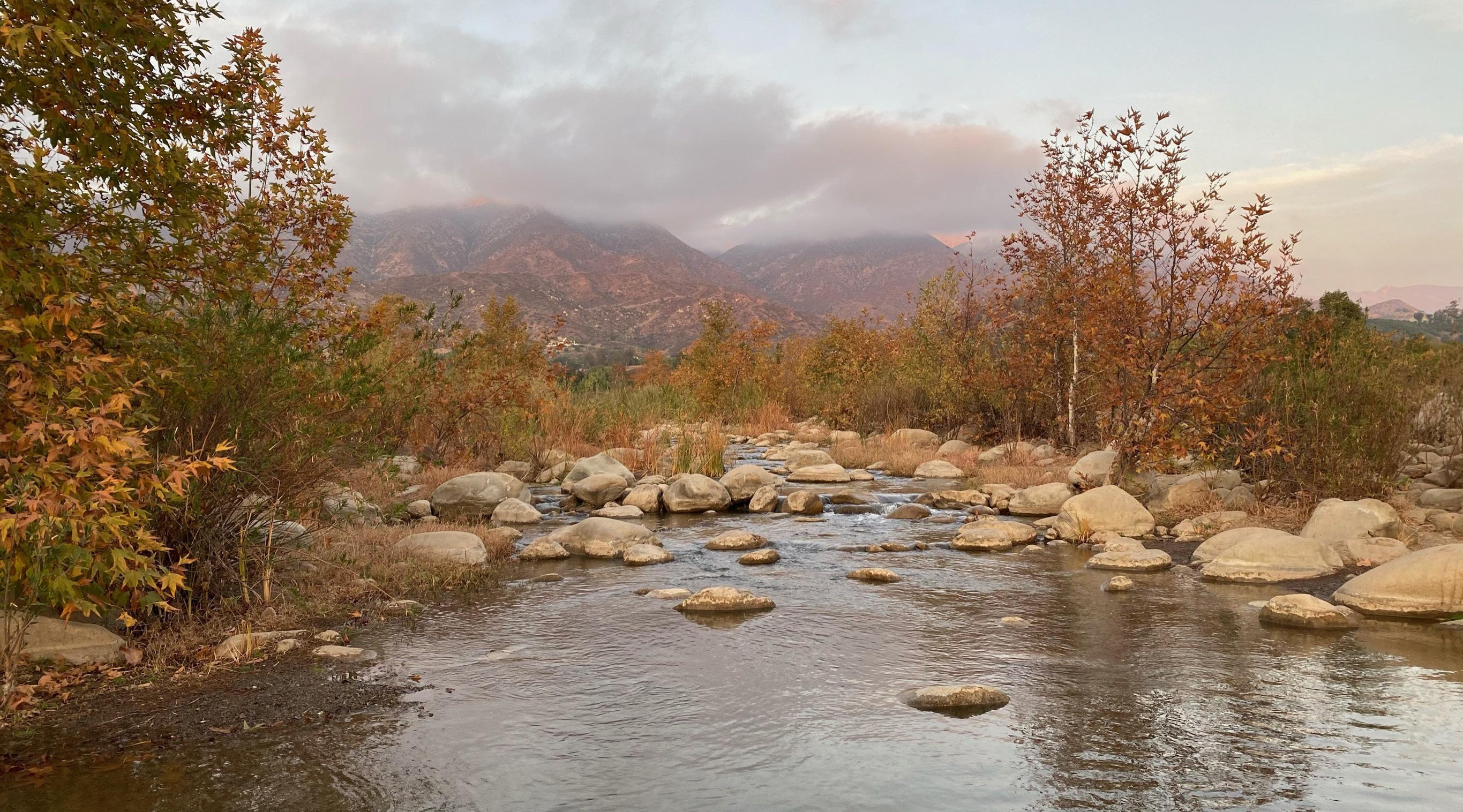
• We engage the community to empower participation in the conservation of the valley
• We protect tomorrow, forever
OVERVIEW & EMPHASIS
OVLC was founded in 1987 to provide an alternative to landowners who were being approached by real estate developers. Thanks to that early advocacy, those threats were largely turned away and OVLC began playing a proactive role in preserving the Ojai Valley’s special places.
Today, OVLC has protected nearly a third of the Ventura River and manages over 2,400 acres of open space—providing habitat for animals like mule deer, mountain lion, and our totem species the California quail. This is an area roughly equivalent in size to 2/3 of the City of Ojai. Within this geography, 2,000 acres are open for free public access, 5 times the open space managed in the valley by the City of Ojai and the County of Ventura combined. This underscores the outsized role that OVLC plays in creating and maintaining open space for the public to enjoy. On these lands, the OVLC maintains 27 miles of trail, guides hundreds of visitors, and hosts tens of thousands of schoolchildren, hikers, equestrians, bikers, and more each year.
Today, new threats from a changing climate threaten the ecology, livability, and character of the Ojai Valley. As the leading conservation organization in the valley, OVLC is turning to nature-based solutions to respond to these threats.

FIRE
While the chaparral ecosystems of southern California are fire-adapted landscapes, the increased frequency, intensity, and scale of climate-fueled wildland fires is outpacing the ability of native landscapes to recover. This altered fire regime is converting our chaparral into non-native grasslands that more easily ignite into wildland fires. This type change in our grasslands dramatically affects native species like California thrashers and wrentits that rely on chaparral habitat. As we witnessed in the Thomas Fire, these fires are now far more explosive and damaging. This devastating consequence of climate change is directly impacting the
livability of our valley. While armoring structures and maintaining defensible space is key to protecting life and property, preserving lands in the wildland-urban interface dramatically simplifies the community response to major wildfires. Open spaces provide a community-scale buffer zone while also creating a recreational interface to the vast Los Padres National Forest. OVLC is working to develop thoughtful land management plans that balance biodiversity benefits with fuel management concerns in order to foster a sustainable wildland-urban interface.

In the Ojai Valley, water is scarcer than land. The City of Ventura’s threatened adjudication of water uses and the new focus on groundwater sustainability (two active groundwater sustainability agencies have been formed) are indications that climate change is altering water regimes and threatening water supplies. The uncertainty around our ongoing drought, coupled with the cost of water, is causing farmers and large landowners to cease or curtail their orchard operations. It is now more urgent than ever to adopt a realistic and proactive approach, not only to conserve water but also to help our
community adapt to living within its means by recognizing the scarcity of this resource.
In addition to the scarcity of water, we are also confronted by an increase in extreme rain events with high potential for flooding. For flood mitigation, we are “planning for flood during the time of drought” with a focus on pursuing solutions to retain water and attenuate flows from heavy climate events. For example, the traditional approach to dealing with flashy flood waters has been to funnel rainwater

WATER
from the watershed as quickly as possible, draining this fleeting and precious resource away from our valley and preventing our aquifers from recharging. We support strategies to retain rainwater while mitigating any damaging effects they may have on the community.


For centuries, broad canopies of native oaks slowed and dispersed drenching rains, reducing erosion and runoff, while their deep roots sank water into our aquifers. Oaks represent some of the richest habitat for insects, birds and mammals in the whole valley. By restoring oak woodlands in our preserves and working with private landowners to transition land back to native habitat, we hope to shift the ecosystem balance back toward one that is better suited to handle extreme water events. As with our fire mitigation efforts, protecting and restoring riparian and historic wetland areas reduces flood (and fire) risk in our community while also increasing habitat biodiversity and accessible open space for our community to enjoy.
The threatened adjudication of our watershed, along with river flow models and the promulgation of groundwater sustainability plans, may provide sufficient understanding of water use at the watershed scale to enable the acquisition of “water for nature.” While this is unlikely in the next few years, OVLC stands ready to embrace any transactional work in water as a means to protect and restore the valley’s ecology.
HABITATS & BIODIVERSITY

Ojai is blessed with outstanding natural areas and is still rural enough that wildlife such as mountain lions and mule deer are largely free to move around the valley. The vast Los Padres National Forest provides a tremendous backdrop to the habitats on our preserves. However, climate change jeopardizes the ability of animals (like southwestern pond turtles and California red-legged frogs) and natural communities to survive. By protecting open spaces at lower elevations than those in the National Forest, OVLC is enhancing nature’s ability to adapt to shifts in climate. Restoring oak woodlands mitigates extreme fire behavior and enhances habitat for a whole suite of mammals, birds,
reptiles, and insects. Planting oak trees, an integral species in protecting biodiversity, helps our native insect pollinators and other species thrive. Oaks are also known to capture fog and provide root channels that enhance groundwater recharge. Removing non-native giant reed ( Arundo donax) and restoring native riparian vegetation restores water to our creeks, provides vital habitat for southern steelhead trout and red-legged frogs, and enhances natural firebreaks. By protecting land along both the Ventura River and its tributaries, OVLC is protecting critical wildlife corridors. OVLC will expand our role as the leading organization for ecological restoration in the Ojai Valley.




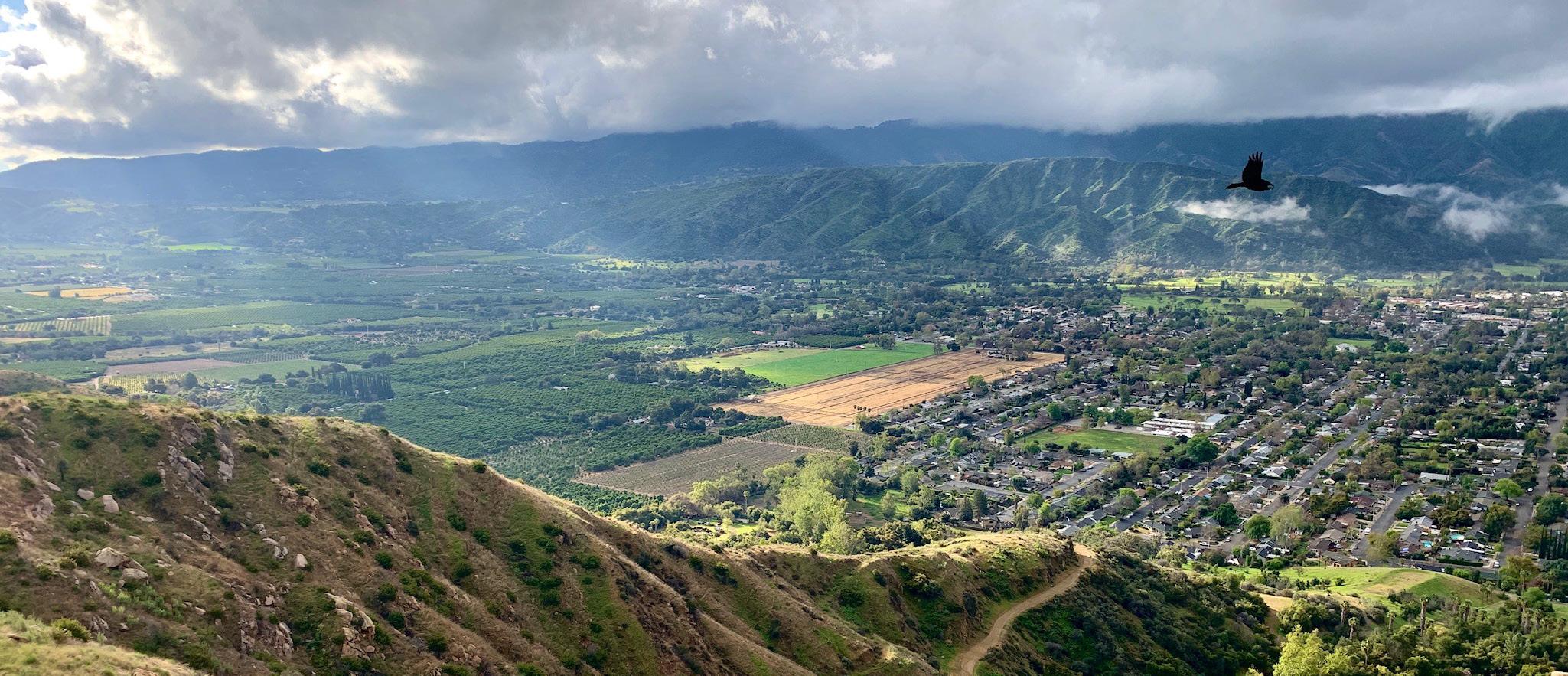


COMMUNITY CHARACTER
The Ojai Valley is known for its rural character and extraordinary views. Many elements come together to make Ojai a special place to live, work, and play: the smell of orange blossoms in the spring, the Pink Moment, miles of trails to explore, and families spending springtime at their favorite swimming holes. Protecting our natural resources protects what makes Ojai special.


PROGRAM AREAS
OVLC has developed into a mature organization with a robust set of programs to preserve Ojai. The following are brief synopses of our principal activities planned for the next five years. First and foremost, like all land trusts, land protection remains our main focus. However, in competitive real estate markets like the Ojai Valley, land conservation is particularly challenging and we must therefore diversify our approach to conservation.
The changing climate presents challenges that OVLC is well positioned to address as a means of preserving the character and livability of the valley—for both native species and people. This is why we have expanded our restoration vision and are launching the Rewild Ojai program.
Our stewardship activities reflect the extraordinary use of the OVLC preserves. We realize the access to nature OVLC provides is vital in our community and this plan focuses on planning for the long-term sustainability and management of our preserves.
Community-based conservation relies on an engaged and supportive community. The revamping of the All About Ojai program seeks not only to deepen our community engagement, but also broaden the community’s understanding of conservation and the Ojai Valley’s ecology. By working proactively to engage the Ventura/Barbareño Band of Mission Indians in a partnership, OVLC strives to more sincerely understand and perhaps integrate traditional Chumash heritage and values into our work.
It is important to note that OVLC strives for permanence in our conservation work. Therefore, having a strong organization with a thriving staff is vital to the long-term sustainability of OVLC. Land trust accreditation is an important imprimatur of our commitment to permanence. Our fundraising and operations will continue to strive to make OVLC a lasting and sustained institution that is also one of the best places to work in the valley.
19
As the valley’s land trust, OVLC embraces our role in protecting the landscapes that make the Ojai Valley a special place to live, work, and play. Our land protection program will continue to prioritize acquisition of land and conservation easements in riparian lands, viewshed lands, and agricultural lands—all which contribute to the character and livability of the valley.
Increasingly, OVLC is looking for ways to preserve the valley’s natural capital—lands that foster resilience and adaptability to the changing climate. For instance, northfacing slopes are modeled to serve as climate refugia in a hotter/drier Ojai Valley. This refinement to OVLC’s acquisition strategy refers to the lands and waters that

sustain all life in the Ojai Valley. Similarly, both California’s governor and the president have announced goals of permanently protecting 30% of the land base by the year 2030. These goals reflect the fact that natural habitat buffers climate extremes and protects the ecosystem services on which all life depends. Thus, permanent protection of land is perhaps the smartest and most costeffective response to climate change. It is clear in the Ojai Valley that OVLC’s preserves also make for a more livable valley by providing easy and abundant access to nature.
In this plan, OVLC is targeting lands that are specifically suited to provide habitat resilience and ecosystem services to respond to our shifting climate. These priorities match
PROTECT
those of the state funding agencies with potential to help OVLC acquire significant acreage. For instance, OVLC experts developed a climate adaptation model to inform the prioritization of lands that may serve as climate refugia for native species of plants and animals whose ranges will very likely shift with increased heat and drought stress. We are applying this model using other ecosystem services to further guide our acquisition strategy. For example, lands with high groundwater recharge potential should be a high priority. Or, land in the wildland-urban interface that could provide a buffer for wildfire or that might need proactive fuel and habitat management. Clearly, lands that provide habitat

for the rarest wildlife species in the valley will continue to be a priority (riparian areas and north-facing slopes in particular).

Some of these lands will naturally occur in areas where OVLC has traditionally worked and potentially serve to expand our current holdings. But, in this plan, OVLC embraces the idea of working with the community to implement projects that are specifically targeting ecosystem service values (for example a pocket park that is designed to enhance groundwater recharge). This may bring the organization into new projects that it would not have traditionally worked on in the past.

RESTORE
In officially adding “restore” to our mission, OVLC is affirming our proactive approach to climate resilience. Our restoration program will continue to restore OVLC lands and riparian zones to enhance biodiversity. In addition, OVLC is expanding our reach to work with private landowners on strategic projects that will serve the whole community. In this way, we broaden our focus in our restoration work and target projects that enhance ecosystem services.
The restoration program builds off of years of success since first beginning at the Ojai Meadows Preserve. Our work there, and at the Ventura River Preserve, catalyzed the organization to start looking to eradicate giant reed ( Arundo donax) and expand riparian restoration on private lands as well as OVLC lands. This experience has made OVLC a leader in riparian restoration and OVLC is looking to lead the eradication of giant reed watershed-wide.
When it comes to Ojai’s biodiversity and resilience, this is a “just add water” landscape. Unfortunately, one of the most tangible effects of the changing climate is the dramatically heightened variability of rainfall and diminished flows in our creeks and rivers. This places a premium on innovative strategies to enhance water resilience. OVLC’s leading role on giant reed eradication is a great example of our contribution to these issues. OVLC seeks to continue to innovate and contribute to water solutions for the Ojai Valley.
Climate change is fueling landscape-scale effects that are fundamentally altering plant communities and damaging ecosystems. While OVLC has done extensive restoration
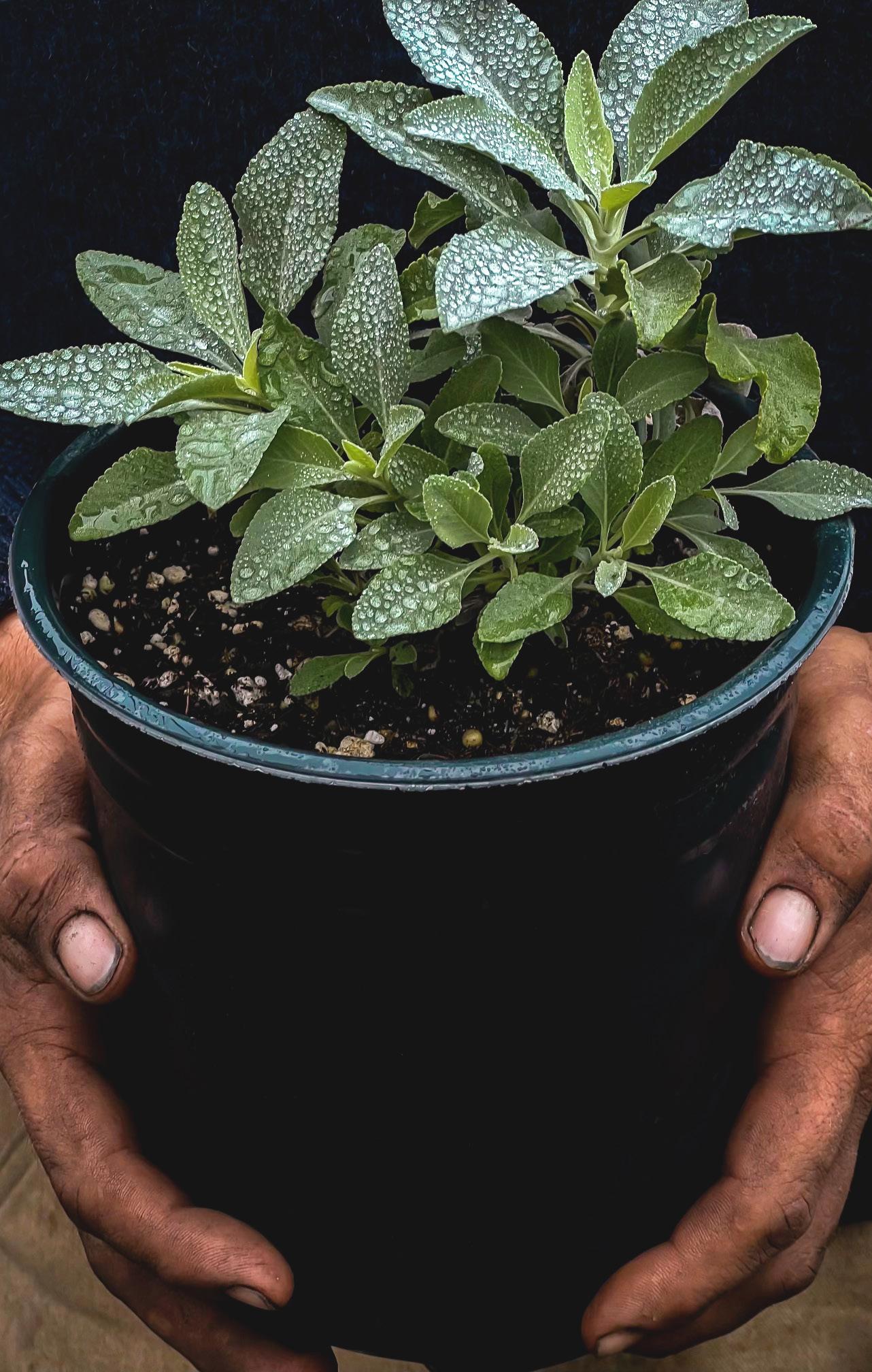
work on our preserves and in riparian areas, we realize that the benefits are limited if we don’t enhance habitat on private lands to build connectivity. It is this understanding that has driven OVLC to pursue an initiative to Rewild Ojai. OVLC’s new program increases the quantity and diversity of native plants grown in our nursery, initiates a seed conservation program (all plants grown in OVLC’s nursery come from seeds and cuttings collected sustainably from the Ojai Valley to protect and propagate local genotypes), and empowers all landowners to Rewild Ojai.


Restoring ecosystem functions of native habitats will support the system’s ability to rebound from extreme climate events. Native plants are central to creating climate resilience. They help to restore soil function, compete against invasive species, save water, and provide habitat and resources for biodiversity. The restoration program will work to measure the environmental benefits of our projects. As we share these with the community, OVLC hopes to deepen understanding of climate resilience in the Ojai Valley.

STEWARD
OVLC’s preserves are undeveloped landscapes that provide intrinsic, and sometimes intangible, community and environmental benefits to the Ojai Valley. The two crises of the Thomas Fire and Covid-19 pandemic highlight both the direct, tangible benefits as well as the less tangible community benefits OVLC provides. During the Thomas Fire, OVLC lands provided crucial buffer zones in the wildland-urban interface, giving firefighters space to defend our valley. During the pandemic, the OVLC trail system became a refuge when all federal, state, and county open spaces were closed. While we have weathered these crises, climate change and a dramatic spike in use of open spaces


nationally make it clear that the OVLC needs to engage in continuity planning for long-term sustainability and management of our preserves.
Access to the outdoors is vital to a healthy community. Since the pandemic there has been a steady increase in the use of trails. In this five-year plan, stewardship will focus on improved design and management of OVLC’s trail system to ensure that recreation activities align with preservation. Balancing the use of our preserves with the conservation of the resources that they are meant to protect is at the core of stewardship. The types of actions that OVLC’s stewardship
program will take include closing unauthorized trample trails and damaged trails, ensuring our open trails are sustainably built and protected, and strategically allocating resources to our trail system.




As we strive to prepare the land for sustainable use, OVLC must also plan to manage the users themselves. This will include creating policies around proper recreational use of the preserves that balance the needs of different users with each other and with the needs of the land. Additionally, we will encourage users to act as stewards themselves through the development of a self-sustaining volunteer program. This will include maintaining diverse volunteer programs, including the Adopter Program, Docent Program, and Crew Lead Program. Volunteers will be encouraged to recruit their peers into our programs, and OVLC staff will provide training and a method to expand knowledge and experience and thereby increase their level of commitment as volunteers.
In our changing climate, the threat of more frequent wildfires continues to increase. As the valley gets hotter and drier, OVLC is proactively preparing for the next fire. This includes inventorying all of our infrastructure, as it may burn again, and cataloging the vegetation and habitats for restoration after a fire, if possible. Over the next five years we will strategically time our fire clearance obligations to reduce seedbanks of invasive plants.
The pressures of climate change and growth in outdoor recreation are increasingly impacting OVLC lands. Over the next five years the OVLC will take these factors into consideration when planning for long-term sustainability and management. As we do so, OVLC will also strive to lessen our footprint by looking to decrease the impact of our organizational activities.

BE A GOOD EMPLOYER
A strong organization is one that helps employees thrive. While a conservation mission attracts employees, paying thriving wages and having robust and competitive benefits retains outstanding staff. In the next five years OVLC will create a sustainable growth plan to meet these ambitious
goals and begin to fund an Operational Endowment to build and sustain a robust organization. OVLC wants all of its employees to be able to afford to live, work, play, and thrive in the Ojai Valley—the place they all work hard to protect.

FUNDRAISE
Community support for OVLC has never been stronger. More than 10% of the households in the valley donate to the organization annually, and nearly 16% donate on a rolling three-year average. Outreach and fundraising are key to creating a strong and sustained organization, and through meaningful interactions with the community we have created this deep base of support.
With the increased acceptance of remote work, like many attractive rural communities, Ojai has had a rush of new residents over the last several years. In this plan OVLC seeks to not only deepen its support in the community, but also connect with those who have just moved here. With the addition of a dedicated staff position of Volunteer and Events Coordinator, OVLC plans to expand its community outreach offerings. This will include more diverse and regular volunteer


opportunities, free walks and talks, an All About Ojai educational speaker series, Mountainfilm on Tour, Native Plant Month, the launch of Rewild Ojai, and other outreach events. Each of these events is an opportunity to introduce the OVLC to someone new—expanding our base of support, as well as deepening relationships with existing donors. OVLC will work to solidify its stature as a leading nonprofit through this strategic and diverse programming.
OVLC as an organization has seen tremendous growth the last few years in both fundraising and organizational capacity. OVLC’s budget increased from $1.9M in Fiscal Year 2022 to $2.7M in Fiscal Year 2023 alone. With the addition of several new staff roles OVLC has increased our capacity for grant writing and fundraising, but we also recognize the need to ensure we are a sustainable organization. In this five-year

plan, OVLC will focus on increasing major donors to support the momentum we have created, build the endowment to keep pace with the organization’s growth, and become one of the best places to work in the valley.
A strong reserve fund, or endowment, is critical to the lasting power of an organization. The OVLC dedicated the lion’s share of a damages settlement from the Thomas Fire to a stewardship fund, thus placing OVLC in a much different place financially than it was just five years ago. The fund helps to support the long-term stewardship of the lands OVLC owns and maintains, as well as creates organizational support for future stability.

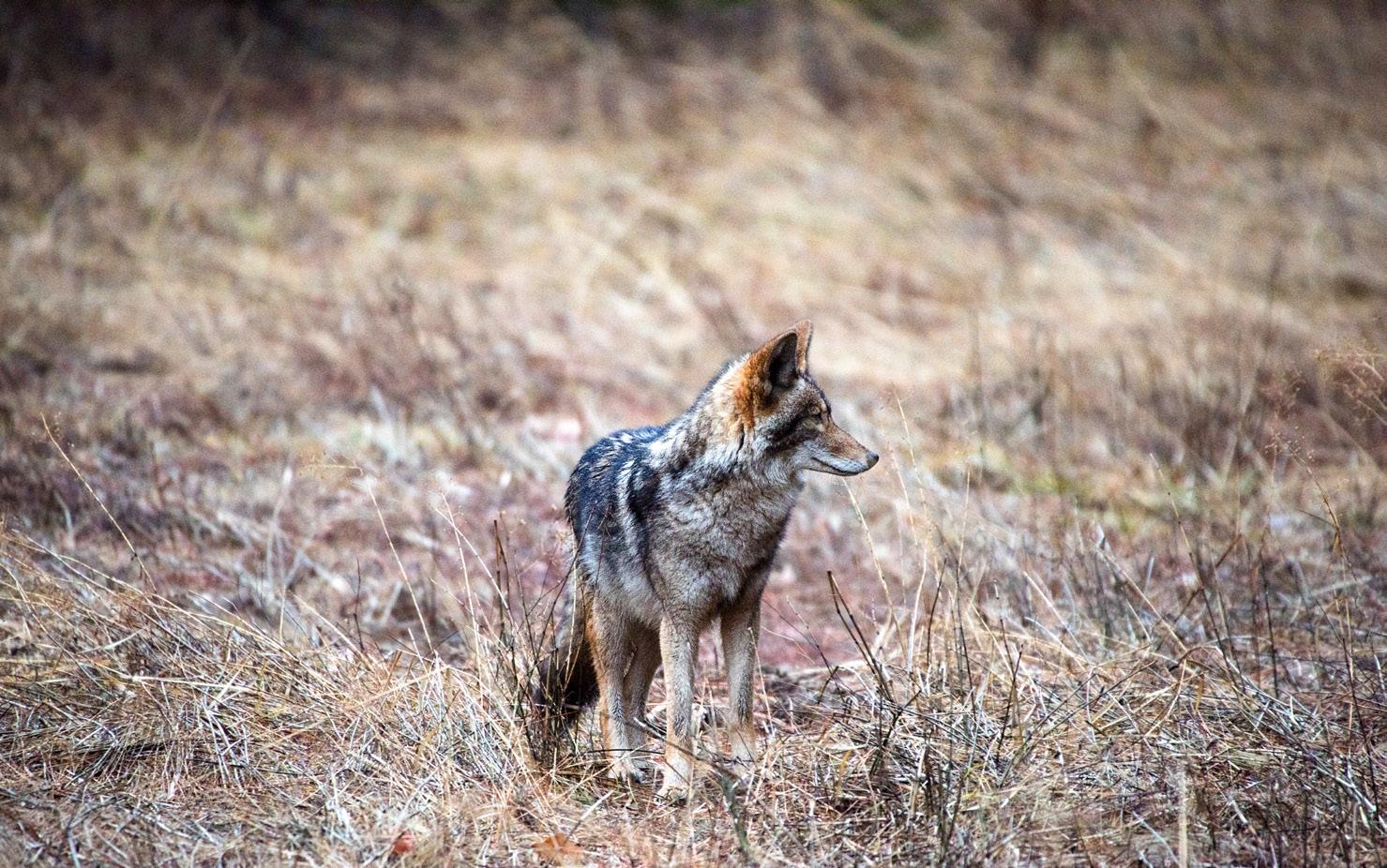
The next step in ensuring a strong organization is to expand the Operational Endowment to help sustain robust operations
for our growing organization. OVLC will increase its promotion of legacy giving through our Pushing Up Poppies Legacy Giving Club. Bequests are suitably appropriate for contributing to lasting work of OVLC. Unless otherwise specified, these gifts are targeted to endowment funds, ensuring the permanence of the organization.
In addition to the fundraising necessary for a thriving nonprofit, OVLC will engage in campaigns for specific project fundraising endeavors (most often land acquisition). As a land trust, OVLC will focus on accelerating both the volume and size of land deals. Campaigns can provide the opportunity to excite the donor base and engage new people. These campaigns will increase overall support for the OVLC’s work and reinforce the significant role our organization plays in the community.
29
GOALS / 5-YEAR PLAN / KPIs
GOALS
What we want to do BENCHMARKS
What we want to have accomplished in 5 years
PROTECT LAND
Protect properties in priority landscapes of the Ojai Valley that advance climate resilience
RESTORE ECOLOGY
Expand restoration program to foster climate resilience in the Ojai Valley
Protect land in priority areas through acquisition of fee or conservation easement:
• Adjacent to existing preserves
• Riparian areas
• North-facing slopes
• Agricultural lands
• Lands with notable ecosystem service benefits
• Continue restoration on OVLC lands to enhance biodiversity
• Develop a comprehensive strategy for riparian restoration
• Pursue restoration projects that enhance ecosystem services
• Establish Rewild Ojai as a self-sustaining program
KEY PERFORMANCE INDICATORS (KPIs)
What we track to evaluate how we are doing
• Complete planning to determine high priority projects
• Complete 7-10 projects in priority areas
• Complete a model project that demonstrates ecosystem benefits
• Include restoration needs in each Preserve Management plan
• Obtain giant reed removal permits for the entire watershed to facilitate riparian restoration and conduct outreach to landowners
• Identify a project focused on ecosystem service benefits with measurable goals
• Rewild Ojai budget creates a self-sustaining nursery program
• Have four demonstration projects for Rewild Ojai on private lands
GOALS
What we want to do BENCHMARKS
What we want to have accomplished in 5 years
STEWARD
Continuity planning for long-term sustainability and management of OVLC preserves
• Integrate responses to extreme climate events in all preserve management plans
• OVLC lands are stewarded by the community
KEY PERFORMANCE INDICATORS (KPIs)
What we track to evaluate how we are doing
• Establish a set trail network plan for existing preserves that strives to balance uses and resource protection
• Create and initiate a plan to close trample trails
• Have a complete inventory of preserve infrastructure
• Vegetation mapping of preserve habitats in preserve management plans
• Establish a self-sustaining volunteer program
BE A GOOD EMPLOYER
Create an organization that allows employees to live, work, and thrive in the Ojai Valley
• Operations/admin supports a strong organization and fosters organizational cohesion
• Operations are enhancing the effectiveness of OVLC programming
• Strive to enhance benefits to make OVLC a great place to be employed
• Integrated board/staff/committees
FUNDRAISE
Diversify and deepen the portfolio of donors who sustain and grow the organization
• Grow the endowment for future organizational sustainability and growth to support robust operations
• Solidify OVLC’s stature as the leading nonprofit in the valley through strategic and diverse programming
• Pays a thriving wage with robust and competitive benefits
• Increased staff retention and satisfaction
• Create a fiscally responsible growth plan
• Establish onboarding procedures for board members
• Establish an operations endowment with a goal of funding $1M of the overall goal by 2027
• Designate end of year cash reserves and bequests to board designated funds: operational endowment, stewardship endowment, and land conservation fund
• Increase number of donors above $10,000 by 30%
• Create a fundraising plan for sustainable growth
• Provide ways for the community to engage twice a month to increase the pipeline of new donors
• Create volunteer driven outreach events

OVLC.ORG

 Tom Maloney Executive Director
Tania Parker Deputy Director
Tom Maloney Executive Director
Tania Parker Deputy Director









































